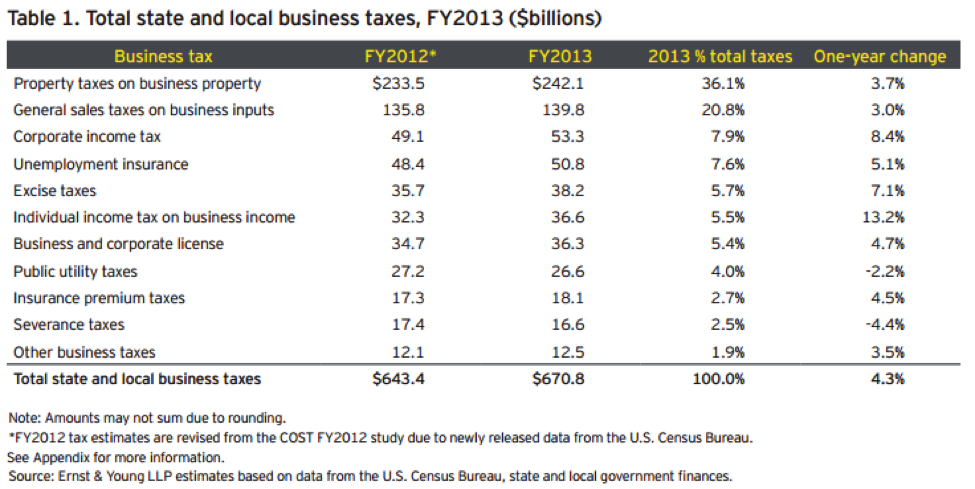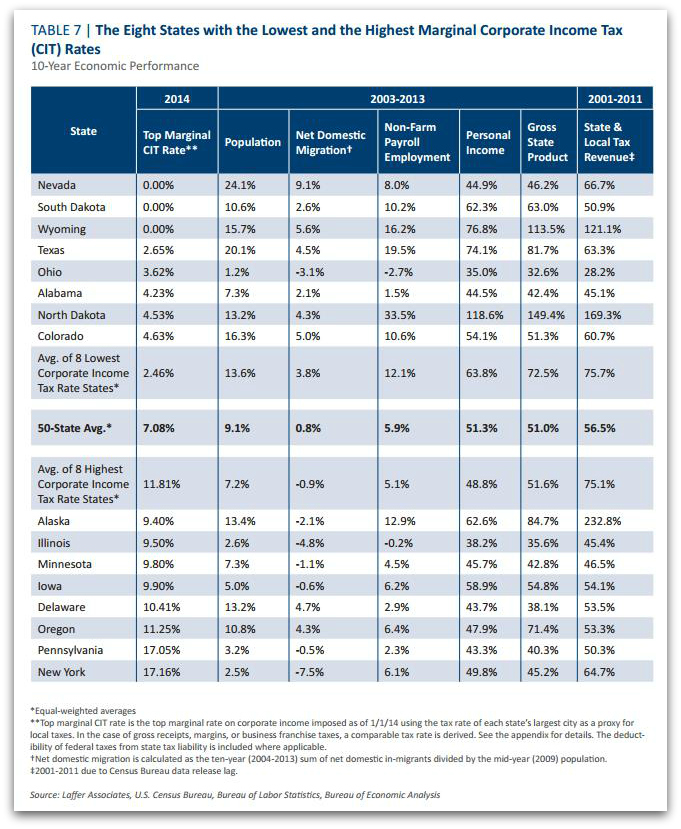New Report on State and Local Business Taxes
The Council on State Taxation, in conjunction with Ernst & Young, recently released a report on state and local taxes paid by businesses in Fiscal Year 2013. The report provides a detailed state-by-state breakdown of taxes paid by businesses and even includes data on what categories the taxes belong. Overall, in FY 2013, businesses paid a total of $671 billion in state and local taxes. Note that this does not include any federal taxes paid by businesses.
The report points out that this is the third consecutive year in which state and local taxes paid by businesses has grown. In fact, FY 2013 was an increase of 4.3 percent over the amount businesses paid in state and local taxes in FY 2012. The report also notes that, on average, businesses pay much more in state and local taxes than they receive in benefits. Ideally these numbers should match, or at least be close to matching, meaning that the taxes paid are roughly equal to the benefits received from government. But in FY 2013, the average business received just one dollar in benefits for every $3.26 paid in state and local taxes. Additionally, the report breaks out the sources of state and local taxes that businesses paid, but also detailed which ones grew or declined from last year.
The American Legislative Exchange Council has done extensive work chronicling the effect of taxes on economic growth, especially at the state level. According to the most recent edition of Rich States, Poor States: ALEC-Laffer State Economic Competitiveness Index, the eight states with the lowest corporate income taxes outperformed the eight states with the highest corporate income taxes in the areas of personal income growth, gross state product (GSP) growth, net absolute domestic migration and non-farm payroll employment growth.
Although corporate income taxes are important in terms of economic growth, the most burdensome category of taxes paid by businesses is actually property taxes on business property. In fact, according the report on State and Local Business Taxes, this category is more than four times more burdensome for businesses than traditional corporate income taxes. For this reason, there have been a number of states examining these taxes and taking steps to reduce this burden on state businesses. Idaho and Montana are two states that we highlighted in last year’s Tax Cut Roundup that have taken steps to specifically address this business tax burden.
For states to realize their full potential for economic growth policymakers should cultivate an economic policy climate that makes it easy for individuals and businesses to save, invest, and grow.


